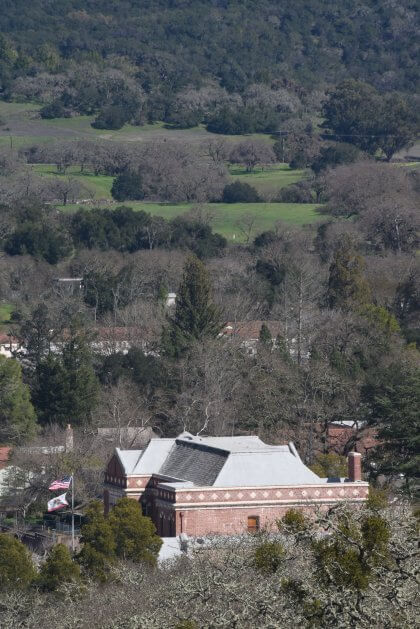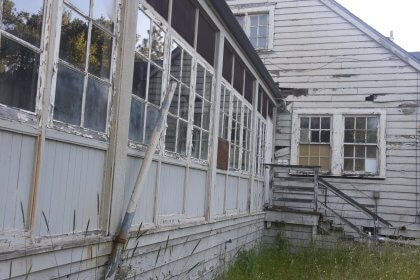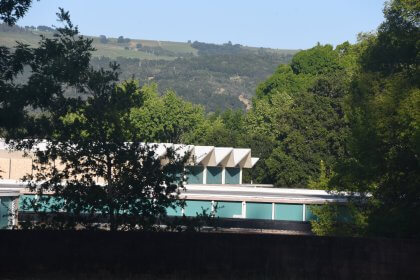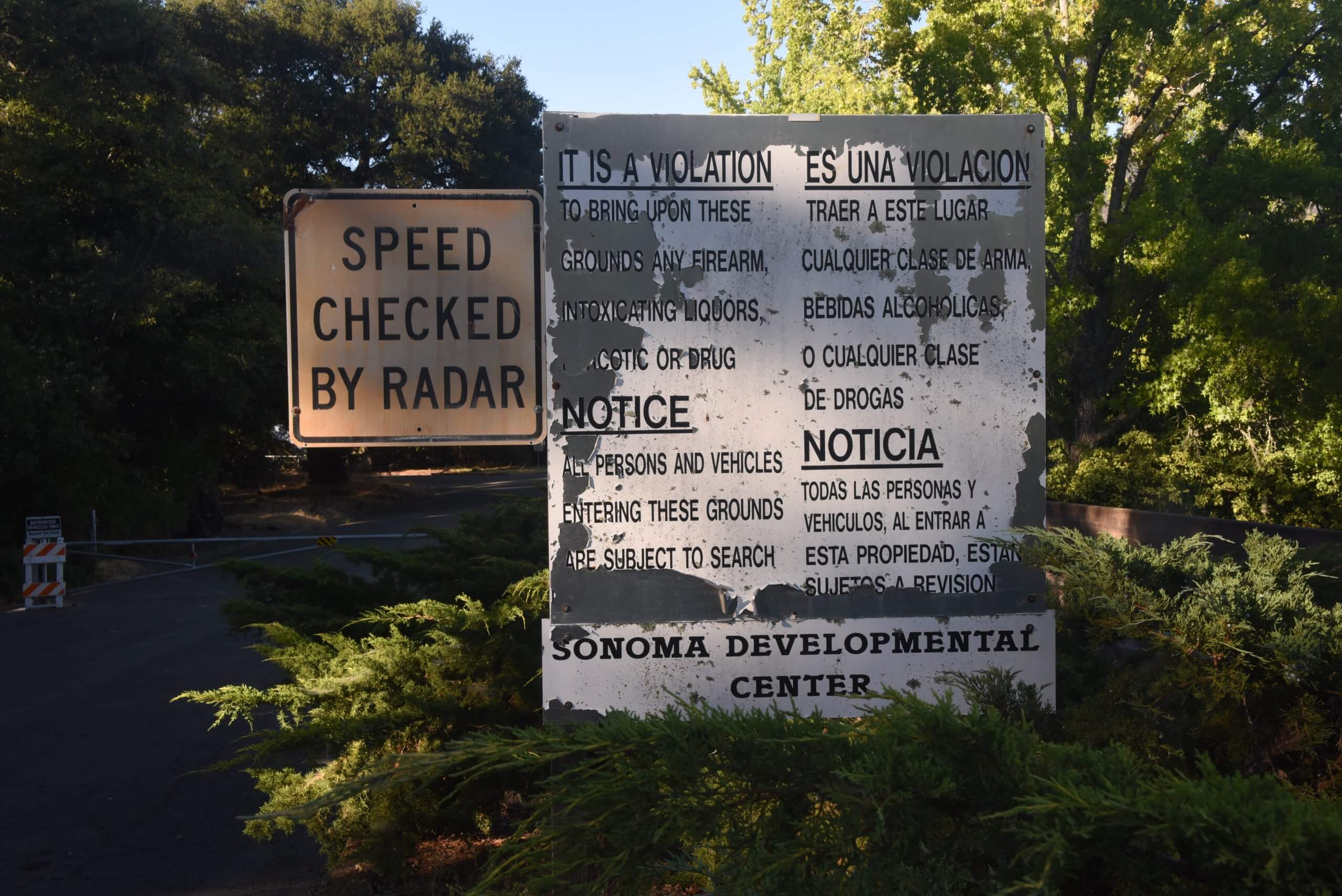An ominous, metaphorical cloud hangs over the Sonoma Valley, composed of a long list of unanswered questions about the future of the Sonoma Developmental Center.

The center, universally referred to as SDC, remains in legal and political limbo following an emphatic, April 26 ruling by Sonoma County Superior Court Judge Bradford Demeo, who rhetorically eviscerated the Environmental Impact Report, and the Specific Plan prepared for SDC by Permit Sonoma, the county’s land-use planning and development agency.
If built as currently proposed, a town with the combined populations of Kenwood, Occidental and Geyserville would be wedged in between Glen Ellen and Eldridge on a two-lane country road in the heart of the Valley of the Moon.
That’s a problem for a good number of the people who live there and fear traffic jams, more people than the community can comfortably absorb and the loss of historic identity.
Judge DeMeo found both the development plan and its 2,518-page EIR violated the California Environmental Protection Act by failing to accurately define negative impacts of the project, and by largely ignoring the need for specific mitigation measures to address those impacts. The EIR, with an executive summary of 789 pages, concluded that – despite widespread concerns about traffic gridlock during future wildfires, the biological impact of so many people on the property’s sensitive wildlife corridor, and virtually no discussion about the seismic safety of the two reservoirs and most structures on site – there is not a single environmental issue on the entire property that would require mitigation.
Said DeMeo, in a 40-page decision, “…the purported mitigation measures in the Plan, its goals and policies, are on the whole factually toothless, vague, and limited to hopeful intentions. … most do nothing more than set forth hopeful intentions and vague statements that the goal of the Plan is to ‘promote’ or ‘encourage’ the stated measures or methods, and that items ‘should’ be considered or studied, implemented if vaguely ‘feasible,’ and the like, with no definition of what any of this means, no performance standards, and no clear criteria.”
At risk at SDC is one of the most important wildlife corridors in the Bay Area, the fire safety and evacuation integrity of a high wildfire region severely burned twice since 2017, and the preservation of a rural community with high historic, agricultural, recreational, ecological and even spiritual value.

The plan approved by Permit Sonoma initially proposed 1,000 housing units on the roughly 200-acre SDC core campus. But under pressure from intense public opposition, the final plan was reduced to 620 housing units, along with a luxury hotel. Then the anointed developer chosen by the state for the project – Rogal & Partners with the Grupe Company – subsequently identified a legal loophole allowing the housing total to grow back to 930 units, or more. That would result in an estimated population of 2,232 people squeezed into the campus footprint. And research from Data USA concludes that number of homes would have approximately 4,400 vehicles.
For context, the 2020 U.S. census put the population of Glen Ellen – which adjoins the property – at 714 people in 408 households. Methods for mitigating the impact of a three-fold increase in population – all of it concentrated along approximately three-tenths of a mile on either side of Arnold Drive – are notably missing in the project EIR, which instead refers to negative issues being somehow “self-mitigated.”
Critics of the overall Specific Plan point out that it grossly violates the original spirit of the project, as defined by public testimony in numerous public hearings and consultant reports.
Founded in 1891 by two women who were mothers of developmentally disabled children, the bucolic, 1,640-acre property, draped across the shoulder of Sonoma Mountain, was purchased by the State of California at a time when land was cheap and compassion affordable. It became something of a pioneering institution – for good and for ill – where the science and the strategies were slowly developed for housing, helping, healing, uplifting, embracing and empowering the most vulnerable, helpless, devalued and forgotten members of society. Over the course of more than a hundred years, SDC evolved into a deeply caring, life-affirming institution that transformed treatment for both the residents and the caretakers.
There were dark times, to be sure, as when forced sterilization became a routine practice and ultimately an international scandal. There were instances of sexual assault and abuse. But there were also an infinite number of bright times, as when on-site workshops designed and built ingenious mobility devices and custom-made shoes for severely-disabled residents, and when those residents had access to fields of wildflowers and a petting zoo, and wide blue skies, and frequent deer, and skeins of geese overhead and the liquid voices of lively streams, combining to form a uniquely liberating living environment.

There is, therefore, woven through the history and culture and landscape and psychic fabric of SDC something profoundly life-affirming, healing, even sacred – sanctified, in fact, by all those who provided the care and all those who received it. Those who worked there knew and felt it. Those who lived there and died there absorbed it. For them it is hallowed ground.
That history and culture does not factor significantly in the now embattled Specific Plan developed by the County. That’s in part because State legislation guiding the disposition of the property requires that housing be the major component of any development plan, but without specifying how much. It’s an understandable priority, given the Valley’s housing shortage, so the County’s Specific Plan is heavily weighted in favor of housing as the most direct means of funding the transition. And that means selling the land to developers capable of buying it.
But residents around SDC reject the premise that a housing crisis should be allowed to degrade and endanger the quality of life in their community. In the minds and hearts of many Sonoma Valley residents, not just Glen Ellen residents, the legacy of SDC is largely ignored, even violated, by the prospect of for-profit developers shoehorning a large suburban subdivision, with a luxury hotel, into a place of rural, pastoral peace and quiet, in order to make sufficient profit. The model for developing the property, devised by Sonoma County planners and their hired consultants, rests on the assumption that only a large housing footprint guaranteeing a healthy profit and return on investment could attract developers big enough to do the job with the necessary capital.
Critics of the plan insist there are better alternatives. There are, they say, numerous examples around the country and in the Bay Area where public/private partnerships have collaborated to turn abandoned public land into visionary public spaces serving multiple parallel needs, not just housing. The most prominent example may be the Presidio in San Francisco.
That site transitioned from a 218-year-old military post to a unique urban park in 1994. In 1996 Congress granted approval for an experimental public/private partnership between the National Park Service and the nonprofit Presidio Trust. There are now 1,100 housing units there, but distributed through 24 discrete neighborhoods and served by public transportation. There are long-term leases but none of the homes are sold and all the land remains federal property.
A much more modest proposal, reflecting public trust values, was submitted to State officials on behalf of the Glen Ellen Historical Society and prepared by a group of local project management professionals who articulated a plan for the creation of a community services district with taxing authority and local leadership. Titled “The Next Hundred Years” plan, the proposal would guide creation of the special district which would then take ownership of the SDC land and oversee development in a gradual, more incremental manner, and with a housing ceiling of 470 mostly affordable units. The Next Hundred Years plan received respectful consideration by state officials, but was readily rejected.
There are, of course, vast differences between the Presidio and SDC, but similar opportunities exist, as outlined in a visionary study created by the Potrero Group, a San Rafael consulting firm that studied SDC on behalf of the Sonoma Land Trust, the Sonoma Ecology Center, the SDC Parent Hospital Association and Sonoma County. The group’s 74-page study concluded, “A visionary transformation at the Sonoma Developmental Center property could inform future closures seeking to integrate community values, sustainability, and economic viability to achieve a higher purpose. What happens next at SDC could serve as a national model for other institutions facing a similar uncertain future.”
Very little in the Potrero Group study is reflected in the SDC Specific Plan and the questions that remain unanswered are legion.
For now, First District Supervisor Susan Gorin says the County will not appeal Judge DeMeo’s decision and that county planners are working with the developers on a revised project. Meanwhile, the California Department of General Services, which has jurisdiction over the land subject to purchase, has announced it will fund operations of the campus for one more year. “After that,” says Gorin, “the cost of the project is on the county.”
Future issues of the Sun will attempt to frame answers that illuminate alternative scenarios and probable futures for SDC. Stay tuned.
Story and photos by David Bolling








Be First to Comment